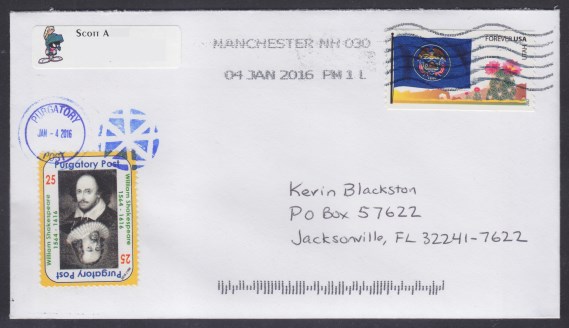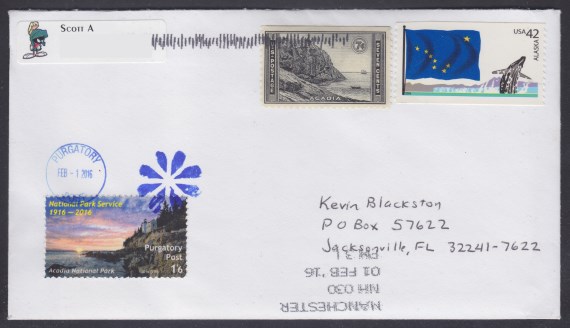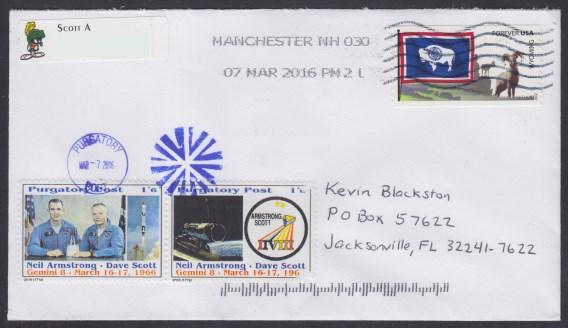Purgatory Post commemorates Shakespeare, National Park Service, Gemini 8
It’s difficult to believe that I haven’t written about any of Purgatory Post’s new local post stamps since last July, but that does appear to be the case. Scott A. has been busy coming up with new material, however, releasing three new issues already this year.
First up is Purgatory Post’s World Local Post Day issue commemorating the 400th anniversary of the death of William Shakespeare. Philosateleian Post skipped that anniversary, but Scott came up with a design that’s somewhat reminiscent of a playing card with two heads. As a hidden joke, one of the heads is Shakespeare’s, but the other is English philosopher Francis Bacon’s. The two men supposedly bore a remarkable physical resemblance, and some students claims Bacon actually wrote at least some of the plays for which Shakespeare is generally considered the author.

Next is Scott’s stamp marking the centennial of the National Park Service. The full-bleed design depicts a scene from Acadia National Park in Maine, and it is to the best of my knowledge the first Purgatory Post stamp denominated in shillings and pence rather than its traditional 25¢ denomination. It’s a pretty design that will fit in well in my landscapes collection. Scott used a 7¢ Acadia stamp from the 1934 national park series to help pay postage on this cover.

Finally, Purgatory Post has a pair of stamps celebrating Gemini 8 and its astronauts, Neil Armstrong and Dave Scott. The 50th anniversry of that flight is actually this week.

You may have noticed that Scott has begun using handcarved corks as cancels just like postmasters of some United States post offices used to do back in the 19th century. The best way I can come up with to describe that is “delightfully anachronistic.” The geometric designs are definitely eye-catching, and they help point back to a time when mail processing was done by hand rather than automated.
Published 2016-03-15
Comments
Log in or leave an anonymous comment.